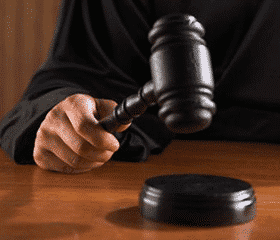
Assigning Liability in Slip-and-Fall Cases
In general, liability is the legal responsibility for an individual’s or entity’s acts or omissions (ii). It is important to note that liability refers to both acts as well as omissions, meaning that an individual may be responsible for failing to perform a duty.
Determining who is liable for an accident may be a complex affair. Many variables contribute to assigning responsibility, and those variables often sort successful settlements from unsuccessful or dismissed cases. There are 3 general tests to determine if a property owner is liable for the injury of a 3rd party Plaintiff. Only 1 of the following 3 conditions need be true in order to confer liability onto a property owner (iii):
1) The property owner, or one of her agents, caused the condition that caused the slip-and-fall accident. This includes spills, slippery floor surfaces, and torn carpeting.
2) The property owner, or one of her employees, knew about the condition that caused the accident but did nothing about it. This is an example of an omission, or failure to act, that may trigger liability.
3) The property owner, or one of her employees, should have known about the condition that caused the accident. This is determined by a standard of reason.
More on the Standard of Reason: The standard of reason is a subjective test that judges and juries use to ask whether a “reasonable” person, under similar conditions, should have known about the condition that led to the accident. If the judge or jury determine that the answer is “Yes,” and a reasonable person would have known about the condition, then the property owner is deemed liable.
Commercial Floor Mats: Preventing Accidents Before They Occur
The task of creating and maintaining a safe environment is ongoing. Property managers and business owners are smart to focus on the 3 aforementioned areas of responsibility to proactively minimize their potential for liability:
Problem: Causing Spills. The best way to minimize liability for a spill or slippery condition you create is to clean it promptly. Of course, this chore may be difficult to keep up with during peak business hours. What’s more, property owners usually rely on employees or other agents to handle this task, diffusing responsibility and creating the potential for accumulating spills and dangerous conditions.
Solution: Rubber Kitchen Mats and Runners may be used to line areas behind bars, along food service stations, and in other areas where liquids are actively used. Many of these floor mats and runners have raised surfaces with holes to facilitate water drainage and spill control.
Problem: Failing to act. Failure to take corrective action occurs often as business owners and managers strive to allocate limited amounts of time to an array of different tasks. Consider: A manager notices a puddle of water just inside the facility entryway. She seeks a janitor to clean the space immediately, however, she first becomes distracted by an urgent phone call. By the time the call has ended, the manager has forgotten about the puddle and has become liable by omission of action.
Solution: Entrance Mats, Logo Mats, and Recessed Mats are ideal installations for lobbies and other entryways that are prone to dirt and moisture accumulation. Installing these items reduces the likelihood that a dangerous condition will be created over the course of a normal business day. Wet Umbrella Bag Stands are particularly effective in these areas as well, giving guests the opportunity to “bag” their wet umbrella before it tracks rain water throughout the building.
Problem: Failing to prevent a dangerous condition that you should have known about.
Solution: Unfortunately, it is impossible to perceive and diffuse every possible area of liability before it arises. However, business owners, managers, and employees may work together to pool individual perspectives on daily operations and brainstorm areas of potential liability.
Commercial Matting Services
Remember: it is the responsibility of the property owners to both create and maintain a safe environment for guests. Commercial floor mat installation is a vital first step in controlling debris and preventing the development of dangerous conditions. However, floor mats must be laundered regularly to remove the dirt and moisture they accumulate. Failure to do so creates a floor mat that loses its ability to clean and trap debris, consequently reducing effectiveness and liability prevention.
Eagle Mat and Floor Products is proud to offer floor mat rental and cleaning services to businesses within the following areas:
- Maryland
- Washington D.C.
- Northern Virginia
- Greater Los Angeles area
- South Florida
For more information, please visit our Services page or contact Eagle Mat to speak with a customer service representative!
(i) http://www.esteyandbomberger.com/rc-slipfall-faq.html
(ii) http://dictionary.law.com/Default.aspx?selected=1151
(iii) http://www.nolo.com/legal-encyclopedia/slip-fall-accidents-proving-fault-29845.html






